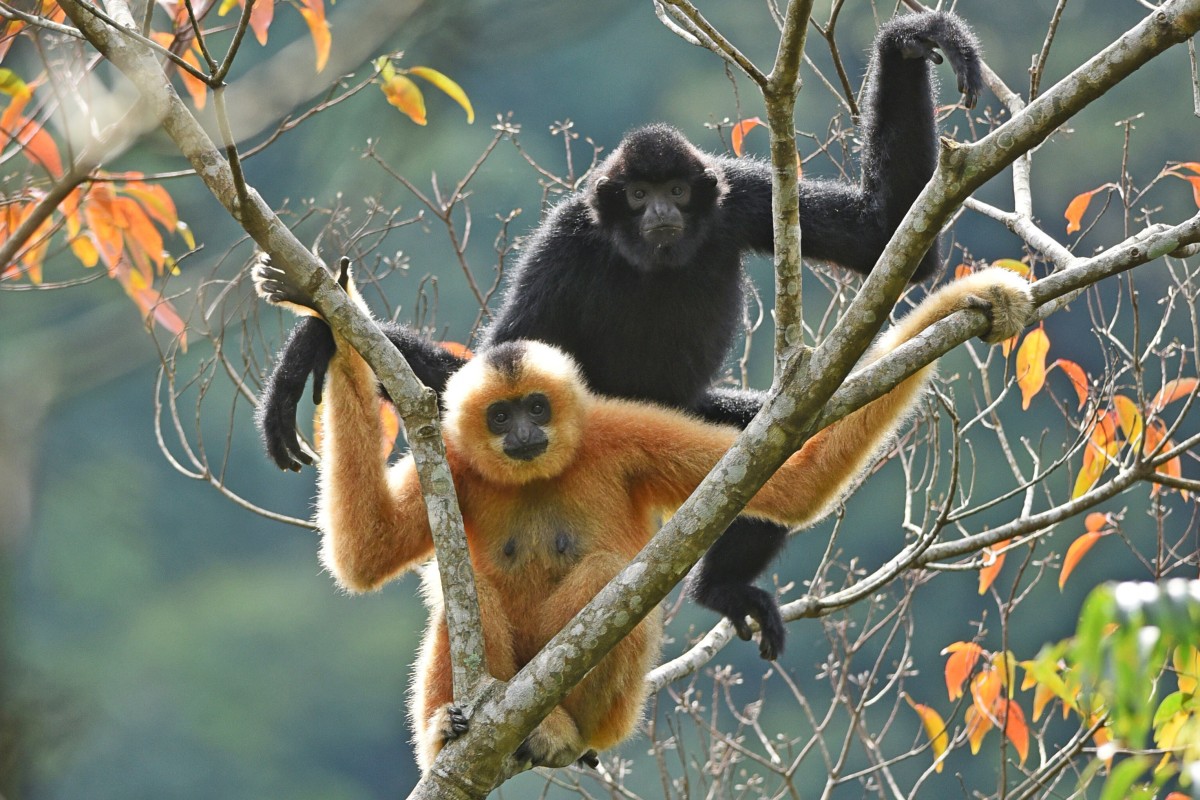To save Hainan gibbons, Earth's rarest primate, experts roll out the big tech
by Abhishyant Kidangoor on 27 March 2023
To save Hainan gibbons, Earth’s rarest primate, experts roll out the big tech
by Abhishyant Kidangoor on 27 March 2023
As scientists and the Chinese government ramp up efforts to protect the critically endangered Hainan gibbon, technology is playing an important part in helping track and monitor the species better.
In recent years, bioacoustics, infrared technology and machine learning are among the tools that have been used to make data collection and analysis easier in the study of Hainan gibbons.
According to estimates, there are only 35 or 36 individuals of the species left, limited to Bawangling National Nature Reserve in China’s Hainan province.
Emmanuel Dufourq had a gargantuan task at hand in mid-2019. He had the job of listening to 6,000 hours of audio data collected from Bawangling National Nature Reserve in the southern Chinese province of Hainan, thousands of miles away from his home base in Cape Town, South Africa.
The audio had been collected in 2016 over the course of six months by researchers at the Zoological Society of London in a bid to study and conserve Hainan gibbons (Nomascus hainanus), the rarest primates on Earth and a critically endangered species. Dufourq spent the ensuing months listening to the audio and training a machine-learning algorithm to enable automated identification of gibbon sounds.
“It’s like teaching a child about the world, you show examples saying, ‘this is a cat, and this is a dog,’” Dufourq, resident researcher and the AIMS-Canada junior research chair at the African Institute of Mathematical Sciences, told Mongabay in a video interview. “It’s this repetitive process of showing information to a computer software so that it can learn to identify the gibbons on its own.”
His work seems to have yielded results. According to a 2021 study published by his team in the journal Remote Sensing in Ecology and Conservation, the algorithm was able to identify nearly 80% of the audio segments that contained gibbon calls. A more recent study, published in September 2022 in the journal Ecological Informatics, improved upon the model; now, the algorithm can recognize false positives — sounds mistakenly thought to be gibbon calls — by virtue of being fed human insights gathered through years of field research. For example, the latest algorithm has been taught that Hainan gibbons don’t call at night, enabling the system to realize that a call it detected during night hours probably doesn’t emanate from the species.
More:
https://news.mongabay.com/2023/03/to-save-hainan-gibbons-earths-rarest-primate-experts-roll-out-the-big-tech/


https://sp-ao.shortpixel.ai/client/to_webp,q_glossy,ret_img,w_1080,h_1080/










